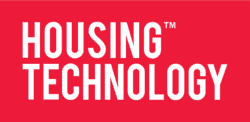The first quarter of 2021 saw unprecedented growth in construction, with housing representing 80 per cent of all new builds in the UK following lockdown. However, the restrictions of the pandemic have meant that many organisations are now lacking enough time and money to address the consequent maintenance and repairs that this upturn implies for the future. In social housing, it is estimated that English housing providers are already spending £5.5bn each year while housing 11 per cent of England’s population.
Drones are revolutionising the ways in which we can inspect and manage buildings and assets. Through our Drone Pathfinder Catalyst programme, backed by the Department for Transport, we help several sectors to harness innovative aerial technologies. Earlier this year, we partnered with Yorkshire Housing and drone service provider Vantage UAV to show how drone-powered building inspections could provide an increased return on investments and enable highly efficient property surveys, while improving resident satisfaction.
More and more organisations like Yorkshire Housing are beginning to opt for a planned preventative maintenance (PPM) approach, proactively inspecting and fixing potential problems before they become major issues; by allowing buildings to be inspected faster, more cheaply and therefore more often, drones support PPM regimes. This leads to longer lifespans for property assets, fewer unplanned repairs, increased safety management and higher quality maintenance outcomes. The likes of Yorkshire Housing can also use the easily-interpretable data from the drones, sometimes collected in just a few hours, to benchmark and compare against future inspections.
How do drone inspections work?
The inspections undertaken as part of the Yorkshire Housing project produced 4K-quality video footage and images of the building from all angles, with annotations of areas of interest or concern, so that the team could quickly identify where to focus attention during upcoming maintenance.
Orthomosaics and 3D models of each site also provided both an overall and detailed views of the buildings. The 3D models produced by the drones’ camera were photographic in detail and because they were constructed using geo-tagged data inputs and intelligent photogrammetry algorithms, the model was scaled accurately. With this data, Yorkshire Housing could take line, area or volume measurements of their properties with centimetre-level precision.
The inspections outputs were collated into a browser-based portal called Scopito, which was used to store, organise and inspect the hundreds of detailed photographs taken by the drones. This platform allowed the housing provider’s surveyors to further annotate, categorise and locate any defects. Based on the annotations, automated PDF reports were generated for contractors and employees who needed the information to hand when carrying out maintenance.
Proactive maintenance
To gain these insights, less than £10,000 was spent in total on the inspections and BIM (building information modelling) across three different sites. Yorkshire Housing predicted a greater than ten-fold return on investment by substituting expensive scaffolding, extensive roof repairs and roof replacements with well-informed streamlined maintenance. These results were achieved from around four days of onsite work, with minimal disruption to tenants and no need for any ‘working at height’. Following the survey, the identified issues were streamlined, with the consequent repairs far less intrusive for residents, and the improvement of the asset life could save leaseholders a significant sum of money.
However, drone technology isn’t just revolutionising how housing maintenance is managed. For organisations looking to operate more sustainably, specialist drones with thermal cameras can help to meet insulation targets.
Heat loss & sustainability
Thermal inspections can provide accurate data about heat loss from buildings and, from the aerial vantage point of the drone, can capture more comprehensive and precise datasets than are usually possible from the ground. This data can then be used to justify interventions, reducing energy wastage through roofs, external walls, windows and defective installations. The sustainability case for drone inspections is even more compelling when we also consider the reduced need for heavy inspection vehicles such as cranes.
These are just a few of the ways that drone technology is helping the housing sector to make more sustainable decisions and to save money, supporting successful future development and creating better homes for people to live in.
David Pounder is a future aviation systems engineer for Connected Places Catapult.

